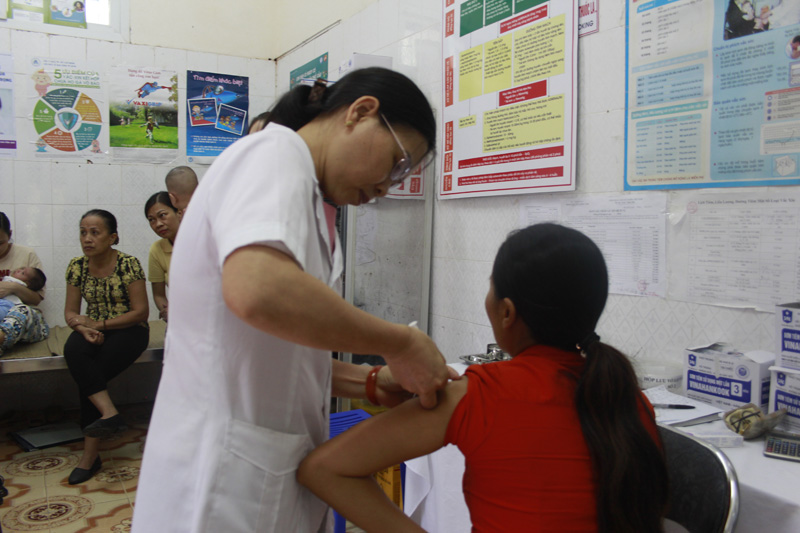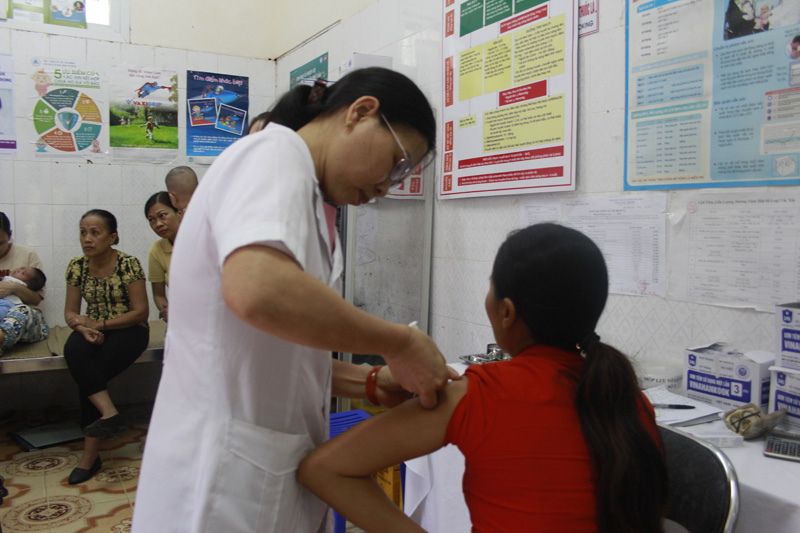
(HBO) - Rabies is a dangerous infectious disease in animals subject to epidemic declaration and also in the list of animal-human transmission diseases. In 2017, no rabies-related deaths were reported. However, in the first five months of this year, there were four deaths in the districts of Ky Son, Luong Son, Cao Phong and Da Bac.
After a dog bite, Bui Thi Hien from Hien Luong
commune (Da Bac) took a vaccination against rabies at the provincial preventive
medicine centre.
The number of people who received
rabies preventive treatment since the beginning of the year has so far reached
94, an increase of more than 15 percent over the same period in 2017. All the
four dead patients, three of them under 15 years old, did not receive preventive
treatment after being bitten.
The main source of rabies
transmission is dogs not vaccinated against rabies. Unvaccinated dogs affect
the immunity of the whole dog community, which will facilitate the spread of the
virus and hence transmit to human and other domestic animals. Human often catch
rabies from pet dogs, and those who are bitten by rabies-infected dogs will die
if they don’t seek preventive treatment from health care facilities. Therefore,
giving dogs and cats shots against rabies is the most important solution.
Luong Thanh Hai, Director of the
Animal Husbandry and Veterinary Medicine Department, said that in 2017 and the
first five months of 2018, the rate of rabies vaccination for dogs and cats in
the province remained low. In 2017, it was 78.2 percent while the first five
months was only 66.9 percent. Localities with low vaccination rates in 2017 included
Mai Chau with 24.3 percent, Da Bac 32.8 percent, Luong Son 54.8 percent, and
Yen Thuy 72 percent.
Analysis by the provincial Steering
Committee for Epidemic Prevention and Control concluded that the main reason
behind the situation is the poor performance in the management of dogs in many
localities in the province, especially in listing pet dogs, thus leaving them wander
without control and bite people, especially in rural and remote areas./.
The emulation movement "Hoa Binh joining hands to build new-style rural areas” has been widely spreading, becoming a driving force that motivates the localities to renew rural landscapes and improve the material and spiritual lives of the residents. In this movement, the people play a central role-both as the main implementers and direct beneficiaries of its outcomes.
In response to the global digital revolution, Hoa Binh Newspaper is transforming itself into a modern and multi-platform media hub, blending cutting-edge technology with a restructured newsroom and a new generation of tech-savvy journalists.
Hoa Binh province’s Association of the Elderly recently held a conference to review the project on expanding the inter-generation self-help club model until 2025.
In a move to implement Resolution No. 57-NQ/TW, issued on December 22, 2024 by the Politburo, which targets breakthroughs in science-technology development, innovation, and digital transformation, the Hoa Binh provincial Department of Health has issued a plan to roll out the "Digital Literacy for All” campaign within the local health sector.
An Nghia Commune (Lạc Sơn District) is one of the communes that achieved the tha standard of the national new rural area in 2018. Entering a new development phase, the commune is now trying to meet the criteria for the advanced new rural development. With the strong political will and the public consensus, the commune is gradually overcoming the challenges to reach this goal, aiming for the sustainable development.



